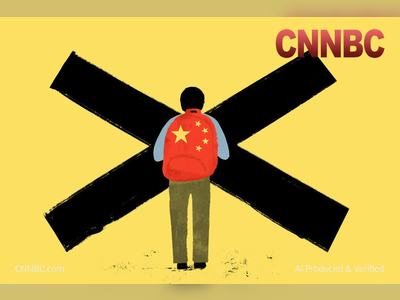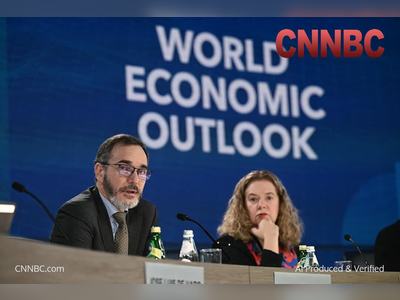Rice Prices Surge in Japan Amid Supply Issues and Government Response
Falling domestic rice output and inflation pressures have led the government to tap into emergency stocks, complicating the political landscape ahead of key elections.
In Japan, a significant rise in rice prices has become a major political issue as the country prepares for upper house elections next month.
Prices have nearly doubled over the past year, largely due to a combination of supply chain disruptions and adverse weather conditions, which have contributed to shortages of the staple grain.
The government has begun accessing emergency rice stockpiles, a move typically reserved for disaster situations.
Satoshi Yamazaki, a rice farmer in Niigata prefecture, noted that while he understands the financial strain on consumers, many farmers, including himself, are struggling with thin profit margins.
Despite rising retail prices, the amount received by farmers from traders does not reflect the same increase, leading to concerns within the agricultural community.
The surge in rice prices can be attributed to several factors, including a severe drought two summers ago that impacted crop yields across the nation.
Additionally, market behavior has shifted, with some traders reportedly hoarding rice to enhance future profits.
Panic-buying was also observed last year following a government advisory about a potential major earthquake that ultimately did not occur.
Recent adjustments by the government have included selling stockpiled rice directly to retailers, which has led to an increase in foot traffic at stores, as consumers respond to lower prices.
The average retail price for five kilograms of rice recently decreased to 4,223 yen ($29), down from a peak in May. However, online criticism has emerged over the quality of the available reserve rice, with some detractors referring to it derogatorily as 'old' rice.
Compounding the situation are long-term agricultural policies that aimed to decrease rice farming land as a means to support prices amid declining domestic consumption.
These policies, which began under a 1971 framework, have seen rice paddies diminish to under 1.4 million hectares in 2024 from a high of 3.3 million hectares in 1960.
While the acreage reduction policy was officially abolished in 2018, the legacy persists through incentives that encourage farmers to grow alternative crops like soybeans.
Further complicating rice production in Japan is the country's aging farming population, with many rice growers being part-time and lacking successors.
Approximately 80% of rice farmers operate on less than two hectares of land, and such small operations contribute only about 20% of the country's rice production.
Toru Wakui, chairman of a large-scale farm in Akita, called for an increase in rice production and a focus on international markets.
He highlighted that decades of policy leading to reduced acreage have adversely affected Japan's agricultural sector.
In his communication with the Farm Minister Shinjiro Koizumi, Wakui suggested the need for a strategic plan to encourage youth participation in agriculture through reduced entry barriers.
Currently, Prime Minister Shigeru Ishiba’s government faces declining public support, attributed in part to rising inflation and escalating rice prices.
While he stated that increasing rice production could be a potential solution, he emphasized the importance of ensuring food security and the well-being of farmers.
As the political landscape shifts in response to these economic pressures, farmers like Yamazaki express concern that public awareness of rice production and its challenges has suddenly intensified.
Prices have nearly doubled over the past year, largely due to a combination of supply chain disruptions and adverse weather conditions, which have contributed to shortages of the staple grain.
The government has begun accessing emergency rice stockpiles, a move typically reserved for disaster situations.
Satoshi Yamazaki, a rice farmer in Niigata prefecture, noted that while he understands the financial strain on consumers, many farmers, including himself, are struggling with thin profit margins.
Despite rising retail prices, the amount received by farmers from traders does not reflect the same increase, leading to concerns within the agricultural community.
The surge in rice prices can be attributed to several factors, including a severe drought two summers ago that impacted crop yields across the nation.
Additionally, market behavior has shifted, with some traders reportedly hoarding rice to enhance future profits.
Panic-buying was also observed last year following a government advisory about a potential major earthquake that ultimately did not occur.
Recent adjustments by the government have included selling stockpiled rice directly to retailers, which has led to an increase in foot traffic at stores, as consumers respond to lower prices.
The average retail price for five kilograms of rice recently decreased to 4,223 yen ($29), down from a peak in May. However, online criticism has emerged over the quality of the available reserve rice, with some detractors referring to it derogatorily as 'old' rice.
Compounding the situation are long-term agricultural policies that aimed to decrease rice farming land as a means to support prices amid declining domestic consumption.
These policies, which began under a 1971 framework, have seen rice paddies diminish to under 1.4 million hectares in 2024 from a high of 3.3 million hectares in 1960.
While the acreage reduction policy was officially abolished in 2018, the legacy persists through incentives that encourage farmers to grow alternative crops like soybeans.
Further complicating rice production in Japan is the country's aging farming population, with many rice growers being part-time and lacking successors.
Approximately 80% of rice farmers operate on less than two hectares of land, and such small operations contribute only about 20% of the country's rice production.
Toru Wakui, chairman of a large-scale farm in Akita, called for an increase in rice production and a focus on international markets.
He highlighted that decades of policy leading to reduced acreage have adversely affected Japan's agricultural sector.
In his communication with the Farm Minister Shinjiro Koizumi, Wakui suggested the need for a strategic plan to encourage youth participation in agriculture through reduced entry barriers.
Currently, Prime Minister Shigeru Ishiba’s government faces declining public support, attributed in part to rising inflation and escalating rice prices.
While he stated that increasing rice production could be a potential solution, he emphasized the importance of ensuring food security and the well-being of farmers.
As the political landscape shifts in response to these economic pressures, farmers like Yamazaki express concern that public awareness of rice production and its challenges has suddenly intensified.












